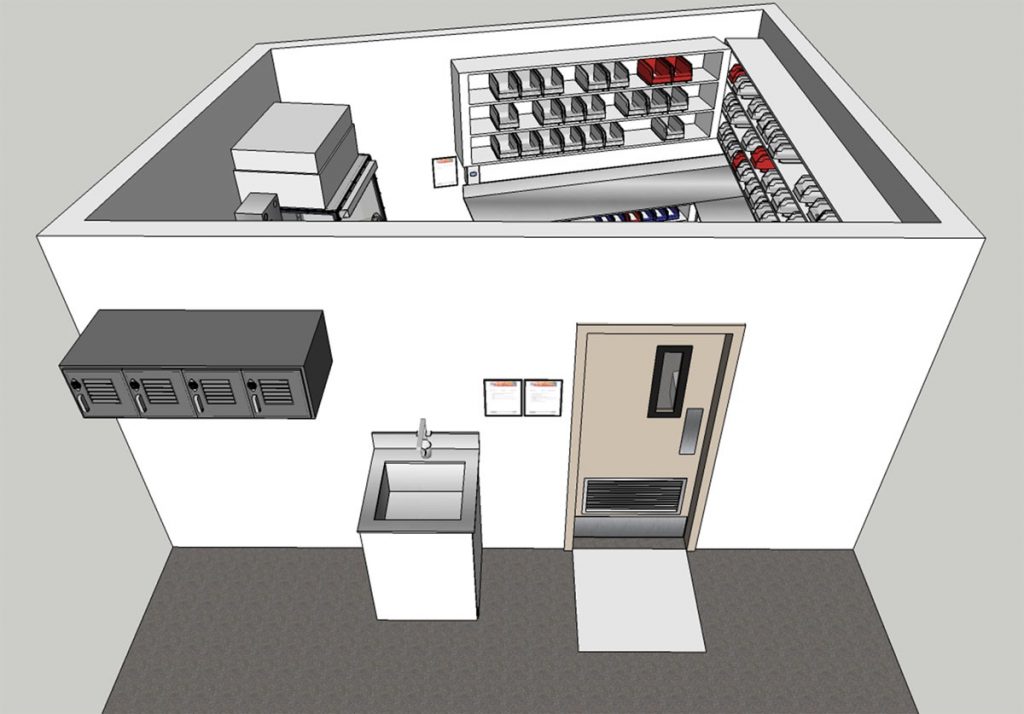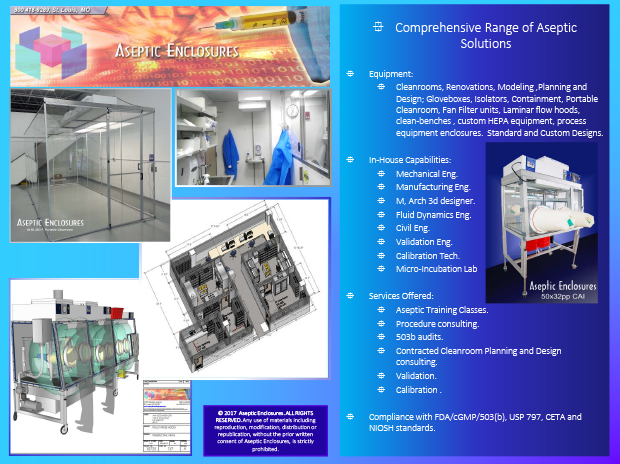Hospital Industry News
How to pressurize an anteroom?

There are several techniques for managing safe and reliable pressurized rooms in healthcare and laboratory applications. When anterooms are present, such as those used for isolation rooms and pharmacies, it is not always clear how the anteroom should be pressurized in relation to the adjoining room and hallway.
Airborne Infection Isolation (AII) patient rooms are designed for negative pressure with respect to the anteroom and hallway. The anteroom can be either negative or positive to the hallway, and still ensure negative pressure in the patient room itself. The intended use of the room is key to deciding when each scenario is applied.
What Are Universal Precautions?
Working in the healthcare industry exposes individuals to diseases and infections that can be transmitted from one person to another. Universal Precautions were guidelines developed regarding infection control that were designed to protect healthcare workers from diseases that are spread through blood and various body fluids. These were applied to the workplace when workers were exposed to blood and certain types of bodily fluids.
Biosafety In The Laboratory: Prudent Practices for the Handling and Disposal of Infectious Materials.
A— GUIDELINES FOR HANDLING PATHOGENIC MICROORGANISMS
Customizing Industrial-Quality Workbenches for Your Needs
Workbenches are used in many industries including those engaged in manufacturing, assembly, packaging, and shipping. Industrial-quality workbenches are also found in laboratories, educational institutions, research centers, and healthcare facilities. Whether they are subjected to light, medium, or heavy use, these furnishings may become more functional when certain accessories are added. Some accessories are designed for specific environments and others are useful in all industries.

Customizing Industrial-Quality Workbenches for Your Needs

Most basic protocol programs for cleanrooms are based on the Institute of Environmental Science and Technology (IEST) recommended practices for contamination control and the ISO 14644 series of international standards for cleanrooms and associated controlled environments. The focus of any protocol program is to protect the integrity of the cleanroom and the products and processes in the cleanroom from the people working in the cleanroom. Whereas contamination may be due to the product, processes, or equipment in the clean-room, the people working in the cleanroom exercise the greatest control over the cause of and elimination of contamination. Therefore, all protocol programs address the functionality of the cleanroom, the behavior of the people working in the cleanroom, and the cleaning and maintenance of the cleanroom.
Complying with and
Attaining compliance with United States Pharmacopeia (USP) Chapters is of great concern within the practice of sterile compounding, as the process can be quite daunting and also expensive. This is especially true in small and/or rural facilities.
Legacy Pharmaceutical Packaging, LLC Issues Voluntary Nationwide Recall of Losartan Potassium Tablets
Legacy Pharmaceutical Packaging, LLC is recalling 40 repackaged lots of Losartan Tablets USP 25mg, 50mg, and 100mg to the consumer level. This recall was prompted due to Camber Pharmaceuticals, Inc. issuing a Voluntary Nationwide Recall of Losartan Tablets, USP, due to the detection of trace amounts of N-Nitroso N-Methyl 4-amino butyric acid (NMBA) a possible process impurity or contaminant in an active pharmaceutical ingredient, manufactured by Hetero Labs Limited, (API manufacturer).
Developing a Robust Compounding Strategy
Developing an effective compounding strategy is critical to ensuring patients have access to properly compounded medications, but because each organization’s needs differ, a one-size-fits-all solution cannot be applied to every hospital. A careful evaluation of the institution’s requirements, the available infrastructure for compounding medications in-house, and any registered 503B compounding facilities in the vicinity with capacity to serve the hospital, is necessary to identify an effective strategy.

Revised 503B Guidance for Outsourcing Compounders

According to the Federal Register Notice that announced the guidance revision (here), the FDA notes that “This revised draft guidance reflects the FDA’s intent to recognize the differences between outsourcing facilities and conventional drug manufacturers and to tailor CGMP requirements to the nature of the specific compounding operations conducted by outsourcing facilities while maintaining the minimum standards necessary to protect patients from the risks of contaminated or otherwise substandard drug products.” The FR Notice also provides additional background on its thinking in making the revisions to the draft guidance.
Workplace Hazards that USP could Prevent
The degree of danger that pharmacy workers are subject to depends on the kind of pharmacy they work in and its location. Pharmacists can be employed in community-, retail-, and hospital-based pharmacies, among others. Each of these workplace settings bring different hazards that need to be addressed to prevent harm.
1. Biological Hazards
Contact with patients and the public exposes pharmacy staff to biological hazards, as will contaminants found in food, water, and the ventilation system. The immunization of workers provides a first line of defense when interacting with patients.
Other measures should also be put into place, including the restriction of access to authorized personnel only, implementation of safe work procedures, and use of personal protective equipment, such as eye protection, gloves, and respiratory protection.
Care should not only be exercised on the medication contained within a pharmacy; the building itself should also be given attention, particularly the ventilation system. Regular maintenance reduces the risk of contamination.


